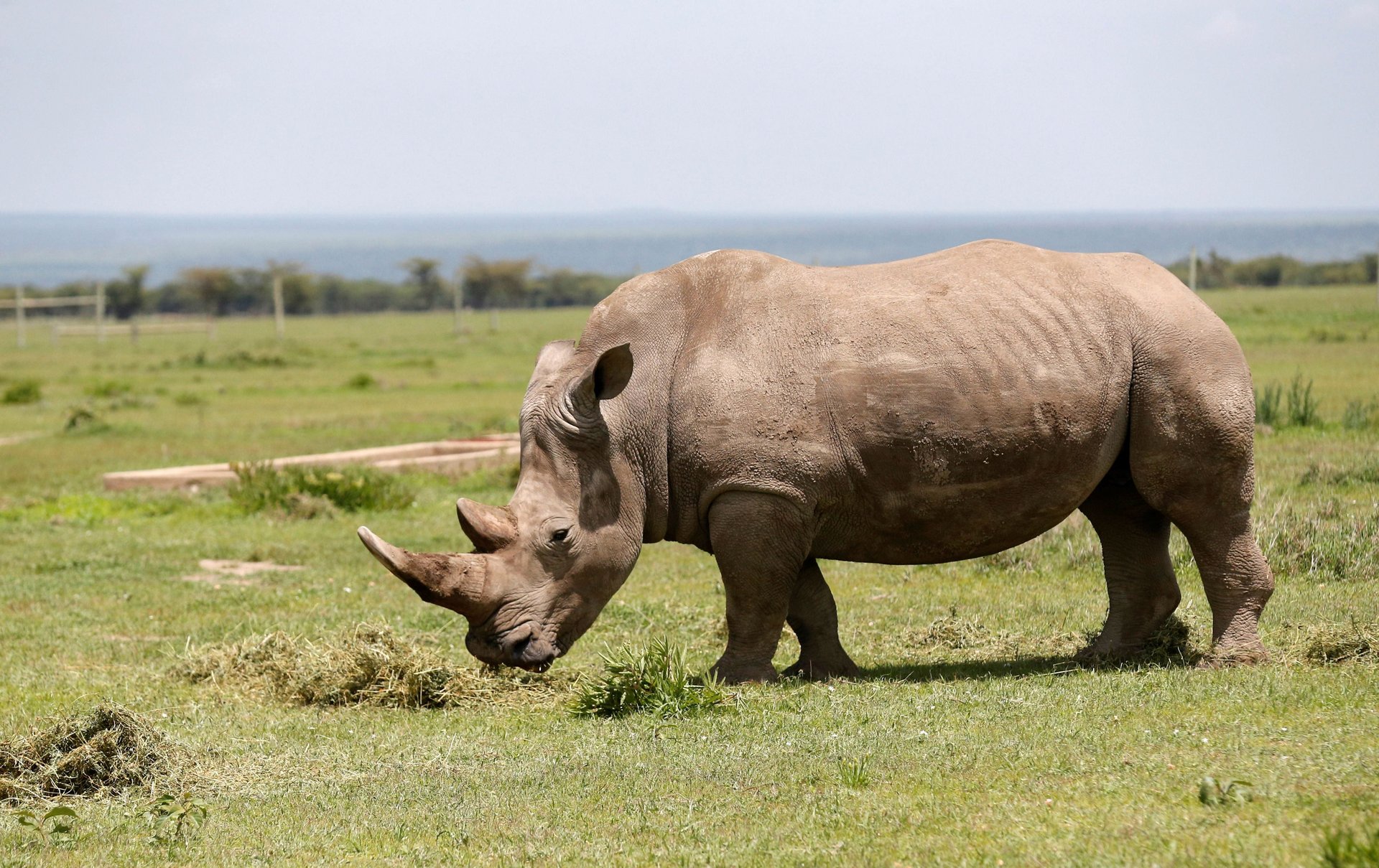An obscure biological trait seems to predict how long mammals—including humans—can live
Biology runs on all sorts of different clocks. While humans tend to stick around into their 70s, 80s, and even 90s, other mammals don’t live nearly as long. Lifespan doesn’t seem to be correlated with size or location on the evolutionary tree. Rhinos, 20 to 30 times our size, typically last into their 40s; chimpanzees, our closest animal relation, usually don’t live past 50. There has never been a clear explanation for these discrepancies.


Biology runs on all sorts of different clocks. While humans tend to stick around into their 70s, 80s, and even 90s, other mammals don’t live nearly as long. Lifespan doesn’t seem to be correlated with size or location on the evolutionary tree. Rhinos, 20 to 30 times our size, typically last into their 40s; chimpanzees, our closest animal relation, usually don’t live past 50. There has never been a clear explanation for these discrepancies.
A study published June 18 offers one possible answer: the size of a mammal species’ pancreatic cells at adulthood seems to be negatively correlated with longevity. In other words, the bigger a species’ pancreas cells, the fewer years it lives.
Yuval Dor, the lead author of the paper, was in the lab, trying to look at the pancreatic cells of newborn mice through a microscope. Dor is a molecular biologist who studies diabetes, an illness caused, in some cases, by the failure of the pancreas to produce insulin. But in the baby mice, he couldn’t distinguish the cells of the pancreas. After investigating further, he and his team realized this was because the cells were much smaller than expected, meaning that they must grow not only in number as the mouse ages, but in size as well.
They quickly searched for records of other mammalian pancreatic-cell sizes. After combing through records of 23 other species, ranging from rhinos and cows to fruit bats and humans, they realized that not all pancreases are created equal: Some are made up of many small cells, and others are comprised of fewer large cells.
Cell sizes varied from 4,288 cubic micrometers (one quintillionth, or 1 x 10^18, of a cubic meter) in an Etruscan shrew to 457 cubic micrometers in a white rhino. Human pancreatic cells fall somewhere in the middle, around 1,031 cubic micrometers. Looking at these data on the whole, the researchers noticed a pattern: If you compare creatures that are roughly the same size when fully grown, the creatures with pancreases that have more, smaller cells live longer.
The researchers hypothesize that larger pancreatic cells are a result of faster sexual maturation. We take over a decade to hit puberty. In the animal kingdom, though, young can grow up fast. The record belongs to killifish, which reside in puddles in Africa, and can reproduce just 17 days after hatching.
The age of a species’ sexual maturity is another indicator of its overall longevity; the overwhelming majority of mammals don’t live beyond the end of their fertile years (humans, killer whales, and pilot whales are the only creatures known to live long enough to experience menopause). Dor and his colleagues posit that the biological prep work required to get ready to reproduce is so taxing, it literally takes years off an animal’s lifespan.
What does that have to do with the size of pancreatic cells? Well, when a mammal’s body is preparing for reproduction, it begins to produce more of a protein called mTOR. That protein also causes cells to increase in size. If there’s a lot of mTOR present in the body of an animal during its early days, it may grow bigger cells and be ready to reproduce sooner—but its cells also seem to age more rapidly. Growing up quickly means that you may have the chance to mate sooner, but then die shortly after. It’s a trade off, Dor explained in a press release.
This theory has yet to be tested, but it does offer a possible explanation for why some creatures grow old faster than others.
Correction: An earlier version of this article stated that a cubic micrometer is a millionth of a cubic meter. It is, in fact, one quintillionth (1 x 10^18) of a cubic meter.